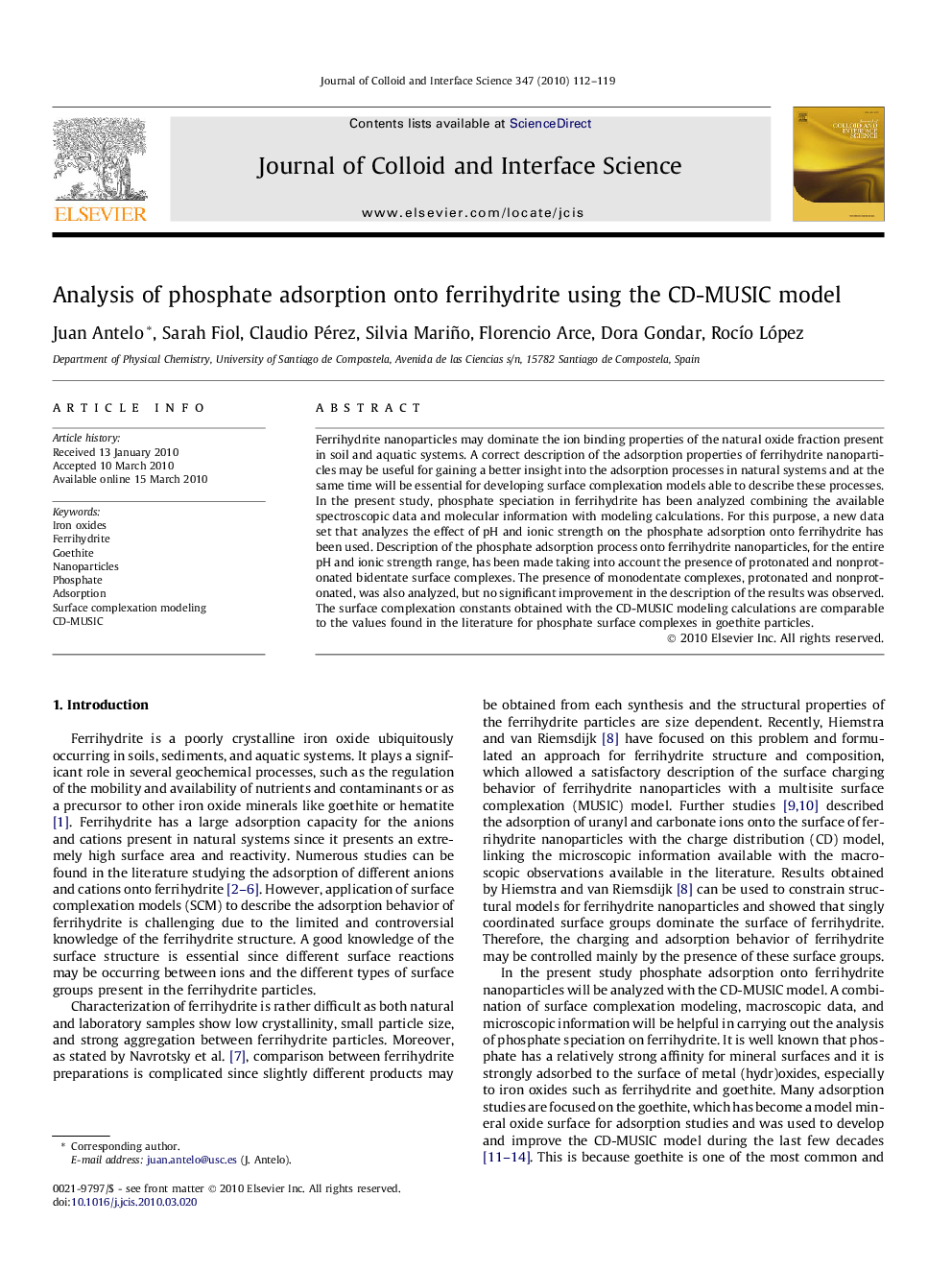| Article ID | Journal | Published Year | Pages | File Type |
|---|---|---|---|---|
| 609841 | Journal of Colloid and Interface Science | 2010 | 8 Pages |
Ferrihydrite nanoparticles may dominate the ion binding properties of the natural oxide fraction present in soil and aquatic systems. A correct description of the adsorption properties of ferrihydrite nanoparticles may be useful for gaining a better insight into the adsorption processes in natural systems and at the same time will be essential for developing surface complexation models able to describe these processes. In the present study, phosphate speciation in ferrihydrite has been analyzed combining the available spectroscopic data and molecular information with modeling calculations. For this purpose, a new data set that analyzes the effect of pH and ionic strength on the phosphate adsorption onto ferrihydrite has been used. Description of the phosphate adsorption process onto ferrihydrite nanoparticles, for the entire pH and ionic strength range, has been made taking into account the presence of protonated and nonprotonated bidentate surface complexes. The presence of monodentate complexes, protonated and nonprotonated, was also analyzed, but no significant improvement in the description of the results was observed. The surface complexation constants obtained with the CD-MUSIC modeling calculations are comparable to the values found in the literature for phosphate surface complexes in goethite particles.
Graphical abstractThe CD-MUSIC model is able to successfully predict phosphate speciation on ferrihydrite nanoparticles under a wide range of conditions, pointing out that the dominant species are the bidentate surface complexes.Figure optionsDownload full-size imageDownload high-quality image (97 K)Download as PowerPoint slide
